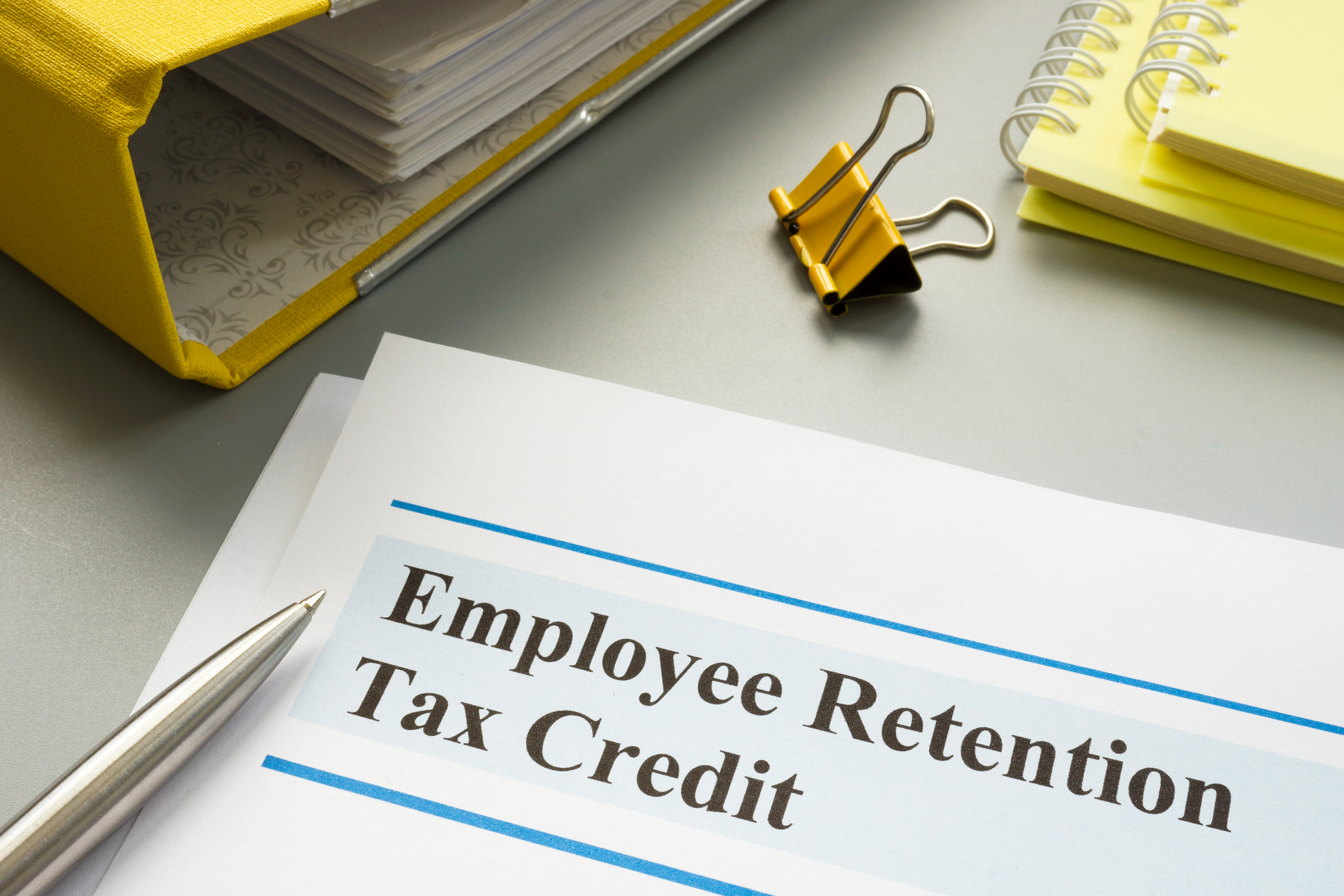Can You Withdraw or Repay Your ERC Claim?
The IRS says certain businesses can withdraw potentially fraudulent employee retention tax credit claims.


The ERC Voluntary Disclosure Program allowed eligible businesses to repay incorrect ERC claims at a discounted rate of 80%. The IRS suspended the program on March 22, 2024. However, the agency has said it could reopen the program and other options to fix incorrect claims remain available.
When claimed properly, the ERC (or ERTC) is a complex refundable tax credit available to certain employers who paid employees during the COVID-19 pandemic. However, abusive tax promoters have encouraged small businesses to file fraudulent claims for the credit.
The IRS has identified more than 22,000 incorrect ERC claims, and the ERC claims withdrawal process, which is still available to businesses with unprocessed claims, as of March had led to 1,800 entities withdrawing $251 million.

Sign up for Kiplinger’s Free E-Newsletters
Profit and prosper with the best of expert advice on investing, taxes, retirement, personal finance and more - straight to your e-mail.
Profit and prosper with the best of expert advice - straight to your e-mail.
IRS ERC claim withdrawal process
The ERC withdrawal process and the initial round of disallowance letters came after the IRS stopped processing new ERC claims in 2023. That moratorium on new claims processing and the ERC claim withdrawal process is part of a larger effort at the agency to protect small businesses and organizations from scams.
Which businesses can withdraw an ERC claim?
Claiming an illegitimate ERC claim can result in interest, penalties, and repayment of the tax credit amount. But in some cases, withdrawing the claims can avoid those consequences.
But note: The IRS says, “Those who willfully filed a fraudulent claim, or those who assisted or conspired in such conduct, should be aware that withdrawing a fraudulent claim will not exempt them from potential criminal investigation and prosecution.”
And not all business owners are eligible to withdraw a previously submitted ERC claim. According to the IRS, you can withdraw the claim only if all the following apply.
- You made the claim on an adjusted employment return (Forms 941-X, 943-X, 944-X, CT-1X).
- You filed the adjusted return only to claim the ERC and made no other adjustments.
- You want to withdraw the entire amount of your ERC claim.
- The IRS has not paid your claim. (If the IRS has paid your claim, you may still withdraw your claim if you have not cashed or deposited your refund check.)
What if you’re not eligible to withdraw your claim? According to the IRS, you might still be able to “reduce or eliminate” your ERC claim by filing an amended tax return if you do not meet the above criteria.
How to withdraw an ERC claim
The IRS has specific instructions for withdrawing ERC claims when businesses have not yet cashed their refund check:
- If your payroll submitted the claim, the company may need to submit the withdrawal request for you.
- If notified of an audit, you can send the withdrawal request to the assigned examiner or respond to the notice.
- If you filed the claim yourself and are not under audit, you can fax withdrawal requests to the IRS using a computer or mobile device (applies only if you have not cashed, deposited, or received your refund check).
Note: If you received but have not cashed a refund check, you must mail your voided check with your withdrawal request.
How to repay your ERC claim
As stated, the IRS recently suspended the ERC Voluntary Disclosure Program, but if no changes are made to the program and if it reopens, all employers that already received their ERC credit would be eligible to repay their claims as long as the following conditions apply:
- The business is not under criminal investigation and has not been notified that the IRS intends to commence a criminal investigation
- The IRS has not received information from a third party alerting the IRS to the participant’s noncompliance
- The IRS has not acquired information directly related to the noncompliance from an enforcement action.
- The business is not under an employment tax examination by the IRS for any tax period(s) for which the taxpayer is applying for this Voluntary Disclosure Program.
- The business has not previously received notice and demand for repayment of all or part of the claimed ERC.
Taxpayers can find detailed instructions for withdrawing claims on the IRS’ Withdraw an Employee Retention Credit Claim webpage. If you have concerns about the process or whether you should withdraw your claim, consult a trusted, professional tax professional or financial advisor.
In the meantime, the IRS urges taxpayers not to trust unsolicited correspondence from anyone urging them to claim an ERC credit and not to take out a loan in anticipation of receiving a refund for their claim. If you receive a tax scam email or otherwise suspect ERC fraud, you should report it to the IRS.
Related Content
- The Big Problem With Claiming the ERTC
- IRS Won’t Process New Employee Retention Tax Credit Claims
- What's Happening With the Employee Retention Tax Credit?
Get Kiplinger Today newsletter — free
Profit and prosper with the best of Kiplinger's advice on investing, taxes, retirement, personal finance and much more. Delivered daily. Enter your email in the box and click Sign Me Up.

Katelyn has more than 6 years of experience working in tax and finance. While she specialized in tax content while working at Kiplinger from 2023 to 2024, Katelyn has also written for digital publications on topics including insurance, retirement, and financial planning and had financial advice commissioned by national print publications. She believes knowledge is the key to success and enjoys providing content that educates and informs.
-
 The AI Doctor Coming to Read Your Test Results
The AI Doctor Coming to Read Your Test ResultsThe Kiplinger Letter There’s big opportunity for AI tools that analyze CAT scans, MRIs and other medical images. But there are also big challenges that human clinicians and tech companies will have to overcome.
By John Miley Published
-
 The Best Places for LGBTQ People to Retire Abroad
The Best Places for LGBTQ People to Retire AbroadLGBTQ people can safely retire abroad, but they must know a country’s laws and level of support — going beyond the usual retirement considerations.
By Drew Limsky Published
-
 Ask the Editor: Taxes, April 11, 2025
Ask the Editor: Taxes, April 11, 2025Ask the Editor In our Ask the Editor series, Joy Taylor, The Kiplinger Tax Letter Editor, answers questions related to IRAs and other retirement accounts.
By Joy Taylor Published
-
 Free IRS Tax Filing for 30 Million People: Will It Continue Under Trump?
Free IRS Tax Filing for 30 Million People: Will It Continue Under Trump?Tax Filing Direct File was piloted last year in 12 states and has since expanded to 25. But some wonder whether the program will last under the Trump administration.
By Gabriella Cruz-Martínez Last updated
-
 Did Florida’s Chance at $1,000 in Property Tax Rebates Vanish?
Did Florida’s Chance at $1,000 in Property Tax Rebates Vanish?State Taxes The Florida Legislature bypassed Gov. Ron DeSantis’ wish to cut property taxes and instead voted to lower the state’s sales tax.
By Gabriella Cruz-Martínez Published
-
 How Caregivers for Adults Can Save on Taxes in 2025
How Caregivers for Adults Can Save on Taxes in 2025Tax Breaks Caring for your parent or spouse can be stressful, but the IRS offers tax breaks for qualifying taxpayers. Here they are.
By Kate Schubel Published
-
 New South Carolina Income Tax Cut Might Eat Your Cash
New South Carolina Income Tax Cut Might Eat Your CashState Taxes South Carolina’s flat income tax bill could have the majority of residents paying higher income taxes. Find out how.
By Kate Schubel Published
-
 Taxpayer Revolt? Why More People Are Avoiding Filing Taxes This Year
Taxpayer Revolt? Why More People Are Avoiding Filing Taxes This YearTax Season It may be tempting to skip filing due to the overwhelmed IRS, but doing so could have financial and legal consequences.
By Kelley R. Taylor Last updated
-
 U.S. Treasury to Eliminate Paper Checks: What It Means for Tax Refunds, Social Security
U.S. Treasury to Eliminate Paper Checks: What It Means for Tax Refunds, Social SecurityTreasury President Trump signed an executive order forcing the federal government to phase out paper check disbursements by the fall.
By Gabriella Cruz-Martínez Published
-
 IRS Layoffs Spark Delays, Doubt This Tax Season
IRS Layoffs Spark Delays, Doubt This Tax SeasonTax Season Tax experts say Trump’s downsizing of the IRS is already causing problems.
By Gabriella Cruz-Martínez Last updated